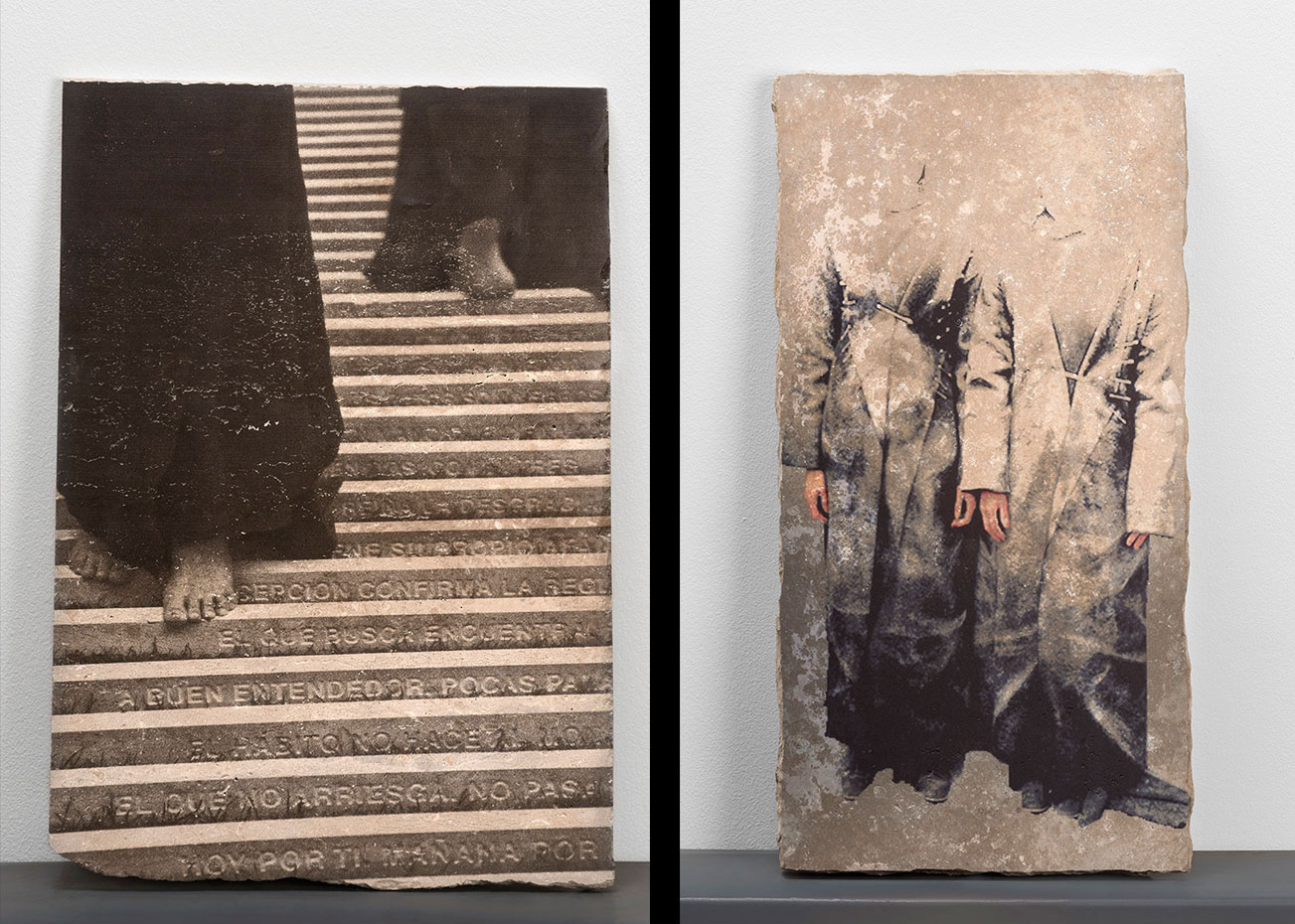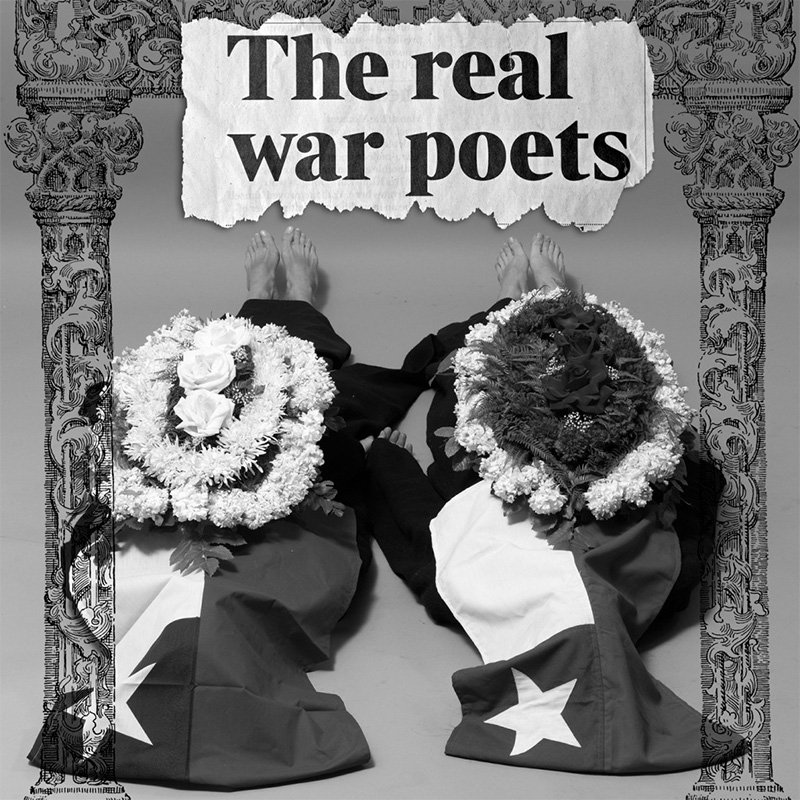Utilizing once more the recycled meaning characteristic of the work of Collective A&S, they have created the installation ANTICIPATED ARCHAEOLOGY growing from the memory of their performed actions. Over an iron structure of 30 meters stand 52 blocks of marble. Weighing over a ton, these blocks of variable sizes have been intervened with images, fragments, and residues of their past performances. Worked by hand in the contemporary nostalgic style of A&S, this new work is a monument to the transcendence of memory. ANTICIPATED ARCHAEOLOGY narrates an epic and nostalgic feat; this time the process of their work is inverted. In past works the artists constructed installations used as stages on which to realise their performances, and now they have created an installation growing from the performed actions. This project recuperates a traditional look on art, but with the aesthetic and experience of a globalized contemporary world. A&S are interested in tradition, myth, and monument, focusing on sustainable projects that aspire to a certain degree of transcendence. This is expressed in the choice of noble and long-lasting materials – not only does the work seem monumental, but one can also see the forms of production which lay behind it: the investigation, the work, the concept and the history of their performance work. Each of their projects involves a big team, given that they are enterprises of great importance and complexity. The use of a recycled meaning is something characteristic in A&S and is evident in ANTICIPATED ARCHAEOLOGY in the selection of images of performances printed on blocks of marble, which reunites more than 12 years of trajectory. All of their works are governed by a principal which is slightly icono-phobic. This is the reason why their performances are realized in a subtle and awe-inspiring way, retired from a space that requires a limitless profusion from them. The retirement manifests the discomfort of participating in a world – and in a space of art – in which the notion of transcendence has broken. (1)
“We need that experience of the religious which art can still give us. That is why we are always trying to give meaning to what we do, reutilizing the fragments of past works. That is the most valid meaning of the theme of memory: constructing a memory of our own work. A memory which belongs to us and which is a place we inhabit, even if the world falls down on us.” Reacting against the consumption of banal images and the post modernist ‘everything goes’, this female double act call for a return to art as meaningful ritual. They do this appealing to ultra contemporary methods and codes, that operate to service a work which is both rigorous and emotional. Installation, performance, sculpture and photography are articulated within a fiction where the central motive is the construction of its own memory, in a context that goes further than the historic, social or political and with a strong emphasis on spirituality, nostalgia, tradition, aesthetics and globalization. Teresa Aninat (1973) and Catalina Swinburn (1979) have been toying with the idea of using medieval shields and simulating a knightly crusade, in which they would be the artist-heroines in the re-conquest of Art, with a capital A. Aninat&Swinburn have been determined to recover the meaning of art, conscious that they compete with a fierce machine of image production designed for quick consumption and waste. “Art, in itself, is an act of faith. It is from that faith that we create art. We aim for our work to function as a catalyst for the faith of the spectators, and through that generate a return to art as significant ritual. The issues that our works establish are generated through the intersection between the sacred and the popular, between the practical and the real, between humour and sentence. We seek for our projects to be a re-conquest, that they generate a reunion of the spiritual experience of art, and in that process, the sacred space is taken back, through some forms which can be understood as rituals, rituals constructed over other rituals, narrations constructed over other narrations.” The work of Teresa Aninat and Catalina Swinburn operates on the unsteady border that is established between cult and artistic practice, through the resource of ritual (performance) and the layout of objects. In the ritual, in the actions of A&S, the material and gestural references are emptied of their prescriptive charge in order to be translated to the terrain of critique of the own art system. The act of reflecting on an image in A&S is a way of elusively tackling the transformation of products of material consumption to products of spiritual consumption. (2)
With its own stamp, the work of this collective unwraps itself from its beginnings in a consistent and coherent manner, their suggestive installations are converted in stages, and their works are constituted indistinctly in ritual, exorcism or talisman through which they attempt to revert waywardness and finitude in favour of transcendence and memory.
(1) Justo Pastor Mellado, In God I Trust, discussing the work of Aninat&Swinburn, Valparaiso 2012.
(2) Justo Pastor Mellado, In God I Trust, discussing the work of Aninat&Swinburn, Valparaiso 2012.





















